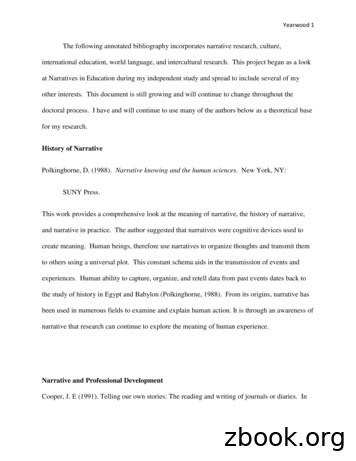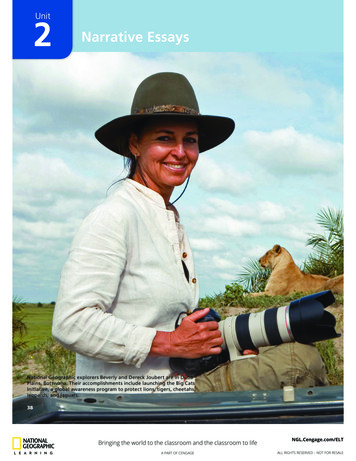Social Narrative Accessibility Guide
Accessibility Guide:Social Narrative
I am going to:The Museum at Bethel Woods!The Museum’s entrance is located on the ground level of our Museum building. Inthe lobby of The Museum, you will find the Welcome Desk, where you can check inand ask for additional information or assistance from one of our helpful volunteers.The Museum at Bethel Woods seeks to be an inclusive space and we want toprovide each visitor with a positive experience. For this reason, we have created asocial narrative to help guide visitors with Autism Spectrum Disorders throughouttheir museum experience. We hope this will be helpful for you as you plan for yourtrip to Bethel Woods Center for the Arts! Please review this social narrative beforecoming to The Museum to help make the most of your visit.To learn about other Bethel Woods happenings on the day of your visit. you maycall The Museum ahead of time: (845) 583-2079.
During my visit, I can explore The Museum and see all of the different galleriesinside. When I first arrive at Bethel Woods, I will see The Museum building. I willneed to come inside the main doors to enter The Museum.After entering The Museum building, I will be in The Museum’s lobby and will seethe welcome desk right in front of me. I will need to check in at the Welcome Desk.I might see some people eating at the café or shopping in the gift shop. It is OK ifthe lobby is a little crowded or noisy. Everyone is here to enjoy The Museum, justlike me.At the Welcome Desk, a Museum worker will tell me about The Museum and giveme a tote bag if I want to use one. The tote bag has things I might like to use inside,like headphones that block noise in case it gets too loud for me, and a SensoryMap that will help me find some calm areas inside The Museum.I will need to remember The Museum’s rules: I will stay with my group; I will walkslowly; I will use an inside voice; I can only eat or drink in the lobby; I will treatobjects in The Museum with respect and be gentle. There is so much to see atThe Museum and so much to learn about the Woodstock music festival thathappened over 50 years ago. I might not see everything in The Museum in oneday, but I can always come back and see more.
GALLERY 1Experiencing WoodstockWhen I first walk into theexhibition I will see a blue doton the floor, this means I’m atthe beginning.In Gallery 1, “Experiencing Woodstock,”the first thing I see will be a big wall witha picture of the crowd of people at theWoodstock music festival. There werealmost half-a-million people there! Thereis a screen on the wall that shows somemusic and videos from the 1960s andWoodstock. I will also see pictures ofsome of the people who made the festivala special experience. One importantperson I will see is Max Yasgur, the farmerwho allowed Woodstock to happen at hisfarm here in Bethel, NY, when many othernearby landowners said “no.”When I’m done in this gallery, I can followthe arrows on the floor to visit other partsof the exhibit. In some places there will betwo arrows showing two directions I cango. It’s ok to go one way and come backto try the other if I want.When I reach the very end of the exhibit,I will see a red dot on the floor. Thismeans I’m all done!
GALLERY 2Exploring the Events ThatCreated WoodstockIn Gallery 2, “Exploring the Events That Created Woodstock,”I will see a picture of a what a family looked like in the 1950sand early 1960s and some of the music records that peopleliked to listen to at that time. I will also see a glass case oftransistor radios, which were an important invention for musicin history. There are touch screens with headphones that I canuse gently. I can also turn on a speaker attached to the touchscreen if I don’t want to use headphones. These screens willlet me listen to music and learn about important songs.As I walk through Gallery 2, I will seepictures with descriptions about theimportant events that happened in the1960s, like the Vietnam War and thefirst trip to the moon in outer space.These events are all a part of the storyof the Woodstock festival and why ithappened. There is a glass case thatshows me the kinds of clothing thatpeople used to like to wear. I’m allowedto try on some clothes to see how theylook! A Museum volunteer will be sittinghere to help me if I need it.There is a Quiet Room in The Museumthat I can go to if I need a quiet placeto feel calm. If I want to, I can sit in thebean bag chairs and use one of theheavy blankets to be comfortable.This Quiet Room has a sign so I knowexactly where it is.
GALLERY 3Planning the ConcertIn Gallery 3, “Planning the Concert,” I will see photos of people who helped to planthe Woodstock festival. I can learn all about why the festival happened in Bethel, NY,and why so many people came to it. I will see newspaper articles and posters thathelped give people information about Woodstock. In this gallery, I will also see a bigbus and a Volkswagen Beetle car. Some people came to Woodstock in buses andcars like these. I can go onto the bus and see what it was like to ride to Woodstock.There is a Museum volunteer sitting here with things I can touch that are similarto things I can see on the bus. When I’m done, there are more touch screens withheadphones or a speaker with music to explore.
GALLERY 4The Festival ExperienceGallery 4, “The Festival Experience,”is located inside The AquarianTheater. There is a movie that is nineminutes long that will play on bigscreens all around me. The moviehelps me imagine what it was like tobe at the Woodstock festival! I canuse a bean bag chair, a bench, orwatch the movie in my own way. It isimportant to know that there are loudsounds and moving lights inside. If Idon’t like loud sounds or bright lights,it’s ok to leave the movie before it’sover or skip this gallery. I will still learnall about Woodstock from the rest ofthe exhibit.After the theater, I will find a placewith cases showing objects fromWoodstock. There is a volunteersitting here with objects I can touchthat are just like the ones in the cases.This will help me understand theseobjects. There is also a map table.I can gently use the touch screensto learn about the map and listen toinformation about the Woodstockfestival site. I can use headphones ora speaker to listen to the map table.
GALLERY 5Woodstock: The MusicIn Gallery 5, “Woodstock: The Music,” I can learn about all of the musicians whoperformed on the stage at Woodstock. There were so many musicians and theyplayed for more than three days in a row, sometimes even in the rain! The only thingin this gallery is a movie theater, where I can watch a 20 minute movie that lets mehear and see some of the performances at Woodstock. The theater gets darkwhen the movie starts to play. I have to remember to use my inside voice if I decideto watch the movie because other people might be watching the movie too.
GALLERY 6The Impact of Woodstockand the ‘60sIn Gallery 6 , “The Impact of Woodstock and the ‘60s,” I can use two moretouch screens to listen to music with headphones or a speaker. I can alsowatch a video on a TV screen with people remembering the Woodstockfestival and talking about why it was such an important event in history.People worked together as a community and took good care of each otherat Woodstock, and that made it very memorable and special. In this space,I can think about what I learned at The Museum and my favorite thingsabout Woodstock. I can even leave a message about how I feel in one of therecording booths. There is a Museum volunteer sitting here to help me if Ineed it.I will see a red dot on the floor in this gallery. This means I have reached the end!I can go back and exploreparts of the exhibit again.ORI can decide that I’m doneexploring the exhibit.I can exit through The Museum Store, or I can walk back through The Museumand exit through the doors where I came in.
person I will see is Max Yasgur, the farmer who allowed Woodstock to happen at his farm here in Bethel, NY, when many other nearby landowners said “no.” When I first walk into the exhibition I will see a blue dot on the floor, this means I’m at t
development. The narratives discussed in this article included (1) narrative of social criticism, (2) narrative of apprenticeship, (3) narrative of reflective practice, (4) narrative of journey, and (5) narrative of hope. Each of these forms provides an avenue for further discovery, development, and growth that not only can help create a second self for teachers, but also build more meaningful .
Administer accessibility supports during instruction and assessment. 5. Evaluate and improve the use of accessibility supports. Intended Audience and Recommended Use The Georgia Department of Education [s Accessibility & Accommodations Manual is intended for use in administering accessibility supports for those students who need them.
DOR Document Accessibility Standards Page 2 . Accessibility Testing Accessibility testing should be conducted on all created documents and forms that will be submitted for review as well as distributed to the public. A designated person within the unit or division should ensure the documents and forms meet DOR Document Accessibility Standards.
IAAP Web Accessibility Specialist (WAS) International Association of Accessibility Professionals. 1. Creating Accessible Web Content. 1.1. Understand and interpret accessibility specifications and techniques. 1.1.1. Overview. This competency focuses on designing and creating web content in accordance with the following W3C accessibility .
Bluetooth Switch or Hook iOS Switch Interface with these steps. STEP 1: SET UP YOUR ACCESSIBILITY SHORTCUT The Accessibility Shortcut gives you the ability to easily turn Switch Control on or off by triple clicking the home or power button on your device. 1. Go to Settings App Accessibility Accessibility Shortcut 2. Select Switch Control
difference between a compiled genealogy, a narrative genealogy, a narrative lineage, and a narrative pedigree?”, Certification: Frequently Asked Questions (FAQ).] The operative word in the BCG Application Guide is narrative. Charts, family group sheets, non-narrative pedigrees and the like will not satisfy the requirement.
A narrative essay tells a story. In fact, narrative is another word for story. In this unit, you will learn how to organize and write a narrative essay. Even though the narrative essay has the same basic form as most other academic essays, it allows the writer to be a little more creative than academic essays usually do.
The Interesting Narrative of the Life of Olaudah Equiano . UNDERSTANDING Gustavus Vassa, or Olaudah Equiano, was the first successful professional author of African descent in the English-speaking world. His Interesting Narrative is a spiritual autobiography, captivity narrative, travel book, ad























